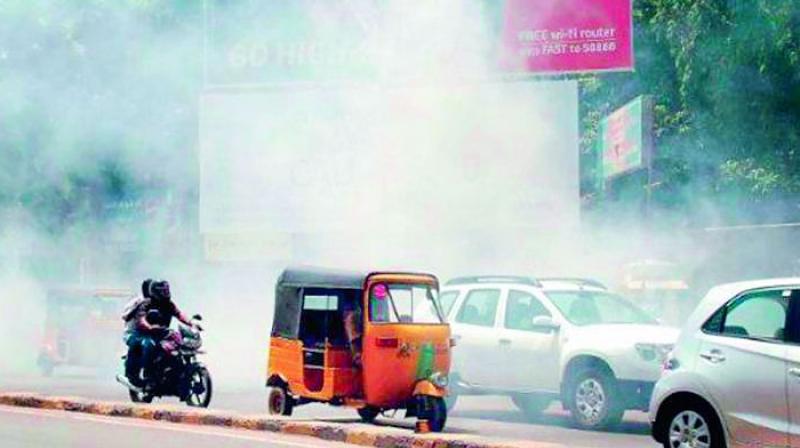Devices err on Hyderabad\'s pollution
Equipment costing Rs 18-20L gives low reading even during peak hours.

Hyderabad: Researchers believe that the expensive devices installed by the Telangana State Pollution Control Board (TSPCB) at various pollution monitoring stations in the city to measure the level of particulate matter (PM) are showing incorrect readings.
TSPCB has six ambient stations across the city to measure emission intensity. They are located at Sanathnagar, Zoo Park, IDA Pashamylaram, Bollaram Industrial Area, the International Crops Research Institute for the Semi-Arid Tropics (ICRISAT), Patancheru, and University of Hyderabad (UoH).
The TSPCB uses a device called Beta attenuation monitoring (BAM) to show the readings from monitoring stations. Each device costs 18-20 lakh, but the emission readings from these devices are surprisingly low, even during peak hours.
A researcher said that “particulate matter (PM) 2.5 is a type of air pollutant which comes out of automobiles. I have been observing the data of the device installed in different locations by TSPCB which gives an hourly reading. BAM’s data from UoH is in single digits, which is impossible. Such readings are only possible in the dense forest and mountains but not in crowded areas such as Gachibowli. The reason behind such readings could be either lack of maintenance of these costly devices purchased from taxpayers’ money, or it is faulty”.
The researchers say the device at UoH was monitored during the peak hours when there is a huge volume of vehicles on the road, but still the reading is in single digits. “Common people believe that these readings are correct but it is serious misinformation for patients of pulmonary disorders and respiratory diseases.”
The pollution monitoring station at the university also doesn’t have proper power backup. Officials said that there was a power cut for 48 hours with no power backup.
When asked about the low PM reading from monitoring stations, N/ Murli Mohan of TSPCB said, “We regularly correlate our data with manual devices and we also noticed that PM 2.5 level was low. These devices are calibrated at regular intervals to provide the correct reading.”
A report by the Centre for Science and Environment (CSE) revealed that life expectancy in India has gone down by 2.6 years due to respiratory and other health related problems caused by air pollution.
“Air pollution is now the third highest cause of death among all health risks, ranking just above smoking in India. This is a combined effect of outdoor particulate matter (PM) 2.5, ozone and household air pollution,” the report said.
“Due to this combined exposure, South Asians, including Indians are dying early — their life expectancy has reduced by over 2.6 years. This is much higher than the global tally of reduced life expectancy by an average of 20 months. While globally a child born today will die 20 months sooner on average than would be expected without air pollution, in India they would die 2.6 years earlier,” the report released by CSE said.

